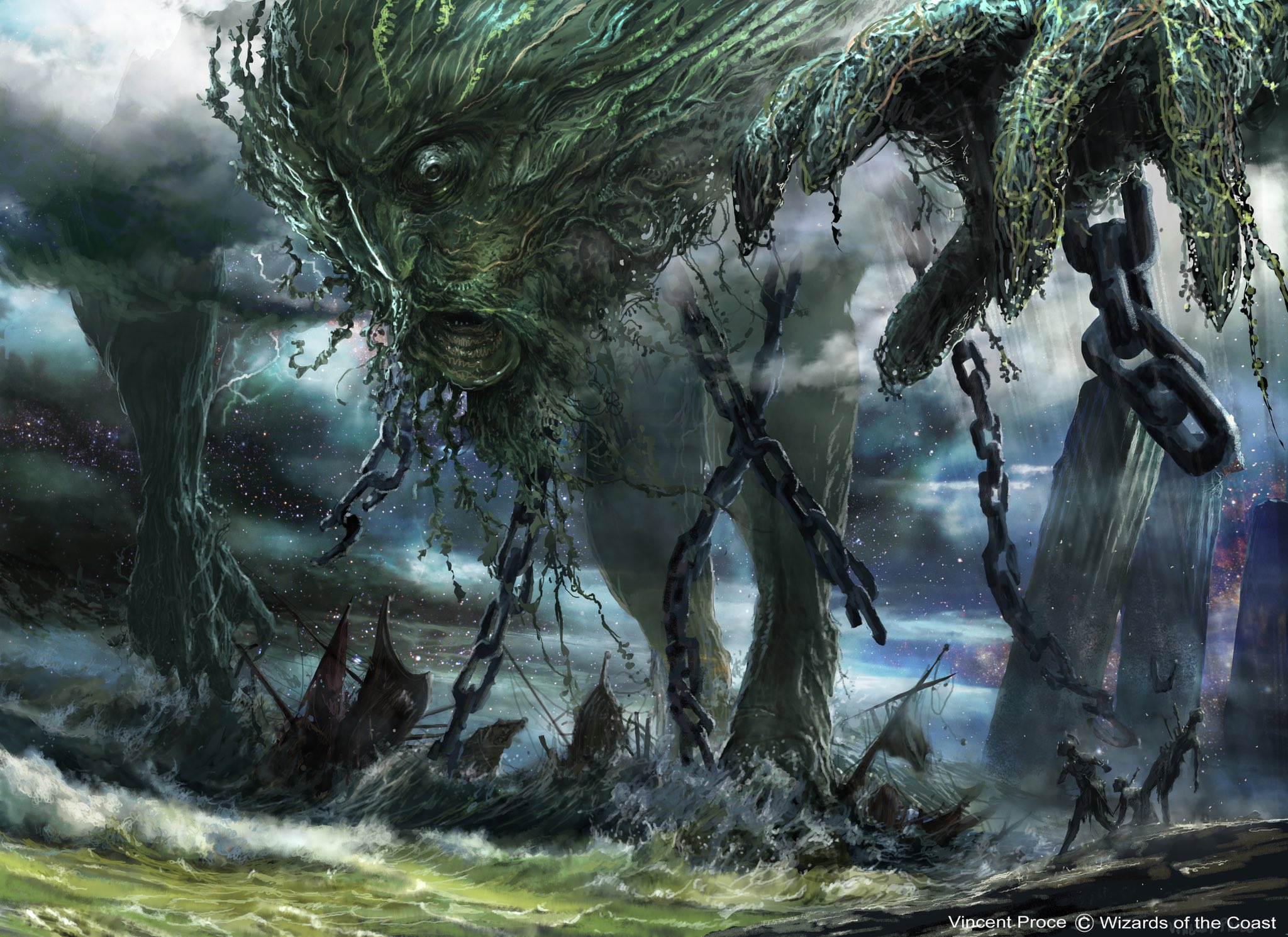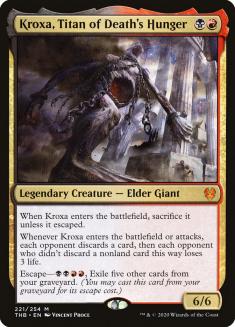Hello, and welcome back to a new installment of Sullivan’s Satchel. This column was on a brief hiatus during last week’s round of Ikoria: Lair of Behemoths previews, where I got the opportunity to talk about Chevill, Bane of Monsters, a card I’m quite bullish about. I also talked in broad strokes about some of the mechanics, and I think Patrick Chapin did an excellent job of summarizing my thoughts on companion.
The game has always been defined by the opportunity costs (or lack thereof) of playing the best cards and strategies, and this is potentially just one more thing to consider, not a structural overhaul of the game’s fundamental incentives. Maybe a few of them end up coming in high in a variety of formats, but then we’re talking about the quality of individual designs as format staples, not broadly indicting the mechanic.
As always, [email protected] and @basicmountain on Twitter for your questions. With that,
From @Pleja89:
Sorry to randomly DM you, but I was wondering if it’d be possible to give some takes on the mechanics that are coming out on Ikoria in the next Sullivan’s Satchel?
Starting with an apology is a good way to get your question answered. I’ve already spoken a bit about companion, and I do understand the abstract concerns about repetition. But even if you always play the same five-drop on Turn 5, enough game has occurred at that point that the surrounding pieces will be different and provide variety. And obviously you won’t play the same card on Turn 5 every game — you won’t have five mana on Turn 5, or you’re going to have better things to do with your mana. I’ve been playing a lot of Standard, Pioneer, Modern, and Legacy lately, and all four of my decks could put a sixteenth sideboard slot to very good use — even if a given companion is “free” from a deckbuilding requirement consideration, the use of a sideboard slot never is.
That isn’t to say I’m a true believer in companion — the cheap ones engender a much greater risk of repetition (less game has gone on, less likely mana is a bottleneck, less likely you have something much better to do with your turn than cast your companion, etc.) and some have negligible restrictions. The novelty can and probably will wear off over time, and maybe the game that’s left over post-novelty isn’t better with companions than without. But they’re exciting to consider, will inspire a wide range of exploration, and will get people to consider cards and strategies they haven’t in the past. Those are big wins.
Mutate has one big strike against, for me — I can’t tell the functionality of the cards just by reading them. I don’t think the reminder text is sufficiently clear, and the mechanic is not simple, so I’m assuming people will need to avail themselves of online resources or have their local judge explain to them what is going on. That sucks. But it’s evocative and I’m guessing pretty fun in practice, which again are big wins. I wish that maybe they had used a lighter touch with the “when you mutate” designs on creatures with mutate, given my concerns about complexity and ambiguity, but I guess once you’ve resigned yourself to paying the complexity tax you might as well mine the design space.
From Tom Johnson:
What’s up with Uro?
Uro does a good job of highlighting that a lot of the most powerful designs are neither all the way “good” or “bad,” but have elements of both. It also highlights the most fundamental challenge of Magic design — that for each set to be novel it needs to be disruptive, for a set to be disruptive it needs a critical mass of disruptive cards, but even the best designs get boring after a while, so how do you make each set sufficiently disruptive without making too many cards people will get sick of? There are some easy tricks here (make a set with a bunch of pushed three-toughness creatures, then reprint Lightning Strike in the next set), but those tricks don’t solve all the problems.
In some ways Uro is a fantastic big bet — very attractive design that speaks to a flagship mechanic in the set. Because of escape plus the escape cost being so demanding, it adds a little bit of texture to the deckbuilding process. I think it’s fair to argue exactly how novel “play with a bunch of fetchlands” or “maybe don’t play a Swamp in your Sultai deck, or at least give it a long look” really is, but it’s not nothing. And the card is strong enough to give controlling decks both the incentive to tap out on their own turn and to get the game over relatively quickly, two characteristics I like in cards pointed for controlling decks (obviously Uro shows up all over the place, but still).
There are parts of Uro that make it a bad bet, too. Namely, it just gives its controller a bunch of generic stuff to leverage, and gives so much of it, that just casting Uro a bunch of times can be converted into a win merely by casting reasonable Constructed-level Magic cards alongside it. More mana plus more cards plus more life is a recipe to win kinda however and it doesn’t lend itself to the most counterplay. Compare Uro to Kroxa, Titan of Death’s Hunger, which is also not a weak card. Your opponent has the option of ameliorating the impact of the trigger by emptying out their hand, but the act of doing that makes Kroxa more powerful in terms of raw damage output. There’s a dynamic game being played that both players are engaging with, and Uro is more of a one-player game.
It’s also a harder card to get away from, to cleanly answer, because it plays out of the graveyard for decks that are otherwise not wedded to that zone. The efficacy of cards like Rest in Peace or Surgical Extraction are pretty limited. It’s harder to get things right if you think Uro has “gone wrong” (I don’t, at least at this point; reasonable people can disagree) because of how generic and spread-out the material is, along with the problems of interacting.
All of this is to say: I don’t think Uro is the best thing to be really good, but I definitely don’t think it is the worst, either, and plenty of cards over Magic’s history can be described this way, and almost all of them got kind of played out by the time they exited Standard. It was part of the motivation to shorten the rotation cadence a few years ago, and while I think it was correct to walk back that decision, there are costs on the other side.
From Corey Eisenhard:
Who is the best Magic player you have ever personally known that is not well known in the larger Magic community?
Jon Sonne was an absolute beast in the late 1990s and early 2000s without much in the way of “critical acclaim.” He was quiet and a little rough around the edges, which is an easy way to get underrated in the Magic community — I remember playing in NJ States in 1999 or 2000 and seeing Jon for the first time and thinking “Thank goodness, someone is here to fix the air conditioning.” Jon went on to win that tournament and many others, and was a major influence in leveling up my game when I had Pro Tour aspirations.
He also played slow as hell but was an extremely good and quick basketball player, two facts that I find charming now but irksome at the time.
His resume is a little light on bold ink — one Pro Tour Sunday, at least one Grand Prix win, and a steady, consistent Gold-level output on the Pro Tour for many years. I don’t think he’s touched a card in about a decade, but I have no question that if he picked the game back up he could reach the upper echelons of competitive play in short order.
From @MarkvChainSmker:
Hi Patrick, I was wondering what features you think create good play experiences in a limited format? Also, what are your favorite limited formats?
I think combat is really fun. I think the sets that make the game broadly about combat are the most fun. So, I’m really suspicious of sets that make the game about something else — like assembling your mana and casting a bunch of generic bombs (original Ravnica block) or sitting around defending yourself and killing stuff until you play something big (Rise of Eldrazi). Not to say those sets are universally bad; they definitely have a following and are “proof of concept” for some cool, ambitious executions. Still, I don’t think they create a usable template for good Limited formats.
My favorite Limited formats are all about when I was playing competitively, and I don’t know how well they’d hold up if I went back. Odyssey-Torment-Judgment and Champions-Champions-Betrayers really stand out, and I’ve drafted the former recently enough to know that it isn’t just nostalgia. In more recent times, I thought Gatecrash was well-executed, and Magic Origins is the last set I would give an unqualified “A” to, for both Limited and Constructed.




